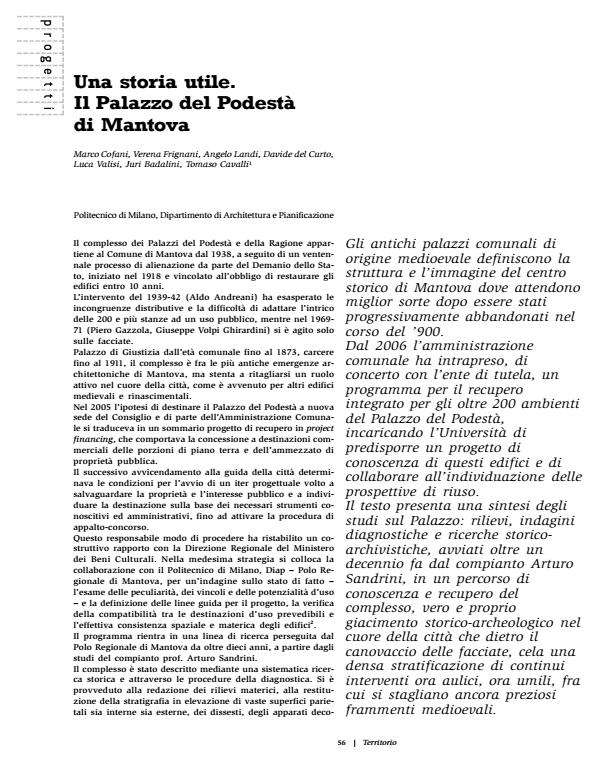Una storia utile. Il Palazzo del Podestà di Mantova
Titolo Rivista TERRITORIO
Autori/Curatori Marco Cofani, Verena Frignani, Angelo Landi, Davide del Curto, Luca Valisi, Juri Badalini, Tomaso Cavalli
Anno di pubblicazione 2009 Fascicolo 2008/47 Lingua Italiano
Numero pagine 22 P. 56-77 Dimensione file 16131 KB
DOI 10.3280/TR2008-047009
Il DOI è il codice a barre della proprietà intellettuale: per saperne di più
clicca qui
Qui sotto puoi vedere in anteprima la prima pagina di questo articolo.
Se questo articolo ti interessa, lo puoi acquistare (e scaricare in formato pdf) seguendo le facili indicazioni per acquistare il download credit. Acquista Download Credits per scaricare questo Articolo in formato PDF

FrancoAngeli è membro della Publishers International Linking Association, Inc (PILA)associazione indipendente e non profit per facilitare (attraverso i servizi tecnologici implementati da CrossRef.org) l’accesso degli studiosi ai contenuti digitali nelle pubblicazioni professionali e scientifiche
A useful history. The Palace of the Podesta of Mantua - The ancient municipal palaces of mediaeval origin define the structure and image of the city centre of Mantua where they deserve better treatment after being progressively abandoned during the course of the 20th Century. The city administration, in co-operation with the conservation authority, started a programme in 2006 for the integrated restoration of more than 200 interiors in the Palace of Podestà and it gave the university the task of organising a project to acquire information on these buildings and help identify potential new uses. The paper presents a summary of the studies on the palace, surveys, diagnostic investigations and historical and archive research started more than a decade ago by the late Arturo Sandrini, designed to document and restore this complex which is a true and genuine repository of historical and archaeological information in the heart of the city. Behind the veil of the façades, recomposed after 1461 by Giovan Antonio d’Arezzo and repaired during restoration work in the last century, lies a dense stratification of continuous modifications, at times stately and at times humble, a background against which the still valuable mediaeval fragments stand out. The results include the identification of the many construction and distributive details, the fruit of difficult construction work over many centuries, and the characterisation of the conservation and restoration constraints which the final design will have to work with in a delicate balance between the requirements of conservation and those of public use.;
Marco Cofani, Verena Frignani, Angelo Landi, Davide del Curto, Luca Valisi, Juri Badalini, Tomaso Cavalli, Una storia utile. Il Palazzo del Podestà di Mantova in "TERRITORIO" 47/2008, pp 56-77, DOI: 10.3280/TR2008-047009